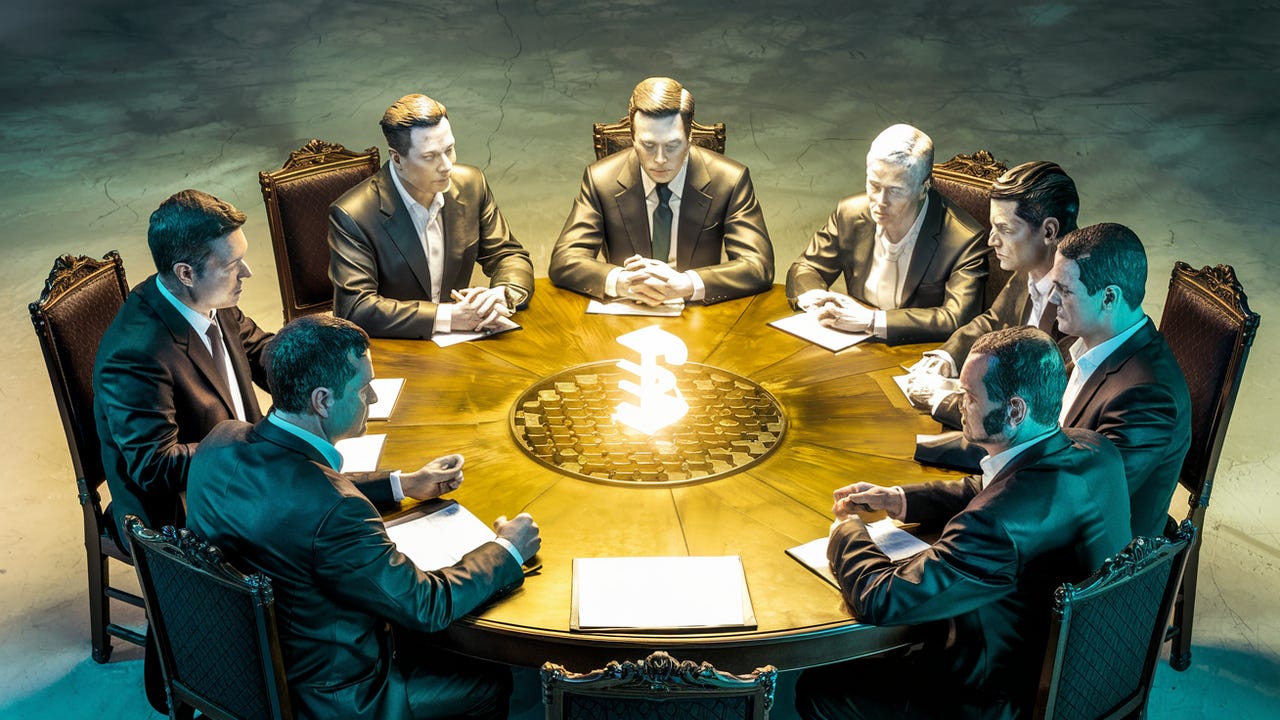THE NEW FEUDALISM: Crypto Kings
In Part 9, How the PayPal Mafia Positioned Themselves as the New Digital Aristocracy
This is part nine of our multi-part investigation. Read Part 1 here, Part 2 here, Part 3 here, part 4 here, Part 5 here, Part 6 is here, Part 7 is here, Part 8 is here
Crypto’s Missing Link
Few people have ever claimed to meet Bitcoin’s creator Satoshi Nakamoto, but the founder of PayPal believes he did.
Bitcoin's mysterious origin story begins with a white paper published by the pseudonymous "Satoshi Nakamoto" in October 2008, followed by the launch of the Bitcoin network in January 2009. Satoshi maintained the network until April 2011, when he disappeared, having never revealed his identity and with no forwarding address.
Peter Thiel, PayPal co-founder, believes he may have met Satoshi Nakamoto at a financial cryptography conference held on the Caribbean island of Anguilla in February 2000. At a cryptocurrency conference in Miami, Thiel recounted how approximately 200 people gathered on the beach in Anguilla to discuss new digital currency systems, specifically in connection with the E-Gold project, which aimed to challenge central banks. Thiel’s sighting remains unconfirmed but the context of such a meeting does make sense.
What's often overlooked in the history of cryptocurrency is how directly it emerges from PayPal's original vision. The founders didn't just build a payment processor; they attempted to create an entirely new global currency system free from government control.
If that sounds a lot like crypto to you, it is.
The New World Currency
David Sacks, PayPal's former COO and now Trump's Cryptocurrency Czar, revealed in 2017: "After PayPal I never thought I would get interested in payments again. But bitcoin is fulfilling PayPal's original vision to create 'the new world currency.' We actually had T-shirts printed in 1999 with that mission statement."
Sacks continued: "Cryptocurrencies like bitcoin are now fulfilling that original vision. They are doing it in a decentralized way (with a decentralized database called the blockchain) whereas PayPal tried to do it in a centralized way."
Luke Nosek, another PayPal co-founder, confirmed this at the 2019 World Economic Forum: "Many people don't know this, but the initial mission of PayPal was to create a global currency that was independent of interference by these, you know, corrupt cartels of banks and governments that were debasing their currencies."
PayPal was too encumbered by existing regulations to pursue the decentralized vision. The PayPal team pursued these objectives until external pressures—from regulators, investors, and eventually eBay's acquisition—forced them to adopt a more conventional business model.
But the vision never died. It simply waited for the right technological moment.
The Satoshi Question
While no conclusive evidence exists, several technical factors have fueled speculation about Elon Musk possibly being Satoshi Nakamoto. The evidence ranges from Musk's proficiency in C++ - the same language used for bitcoin, to Elon's son being named after Pokemon character Satoshi. It's all circumstantial and Musk has consistently denied he is Satoshi.
Musk has all the credentials (involvement in projects requiring advanced encryption and security), a Background in Digital Payments: Musk's early work on X.com and PayPal shows he was thinking about digital money and decentralized payment systems, a reputation as a technical innovator and systems thinker. It fits the profile of someone capable of architecting a complex, decentralized protocol like Bitcoin.
But for now we have to take his word for it.




